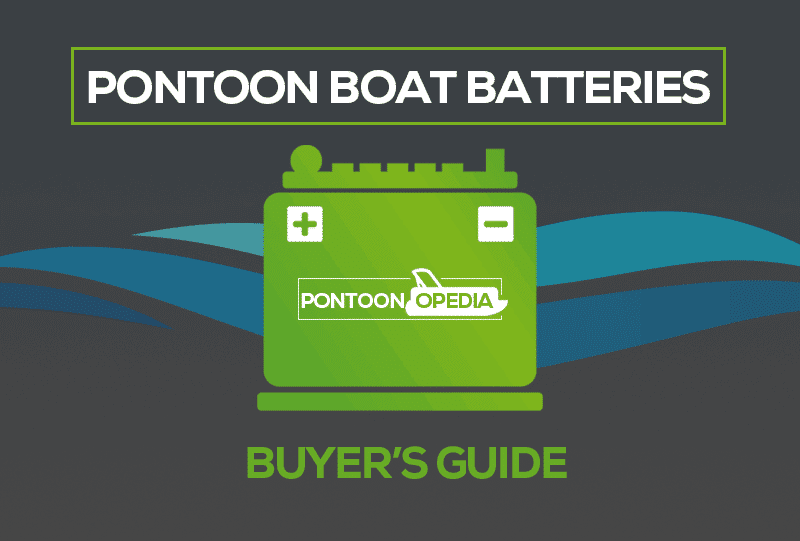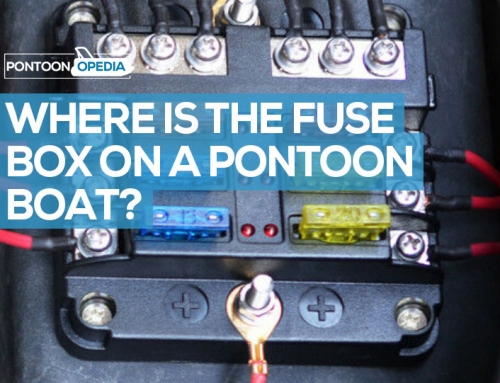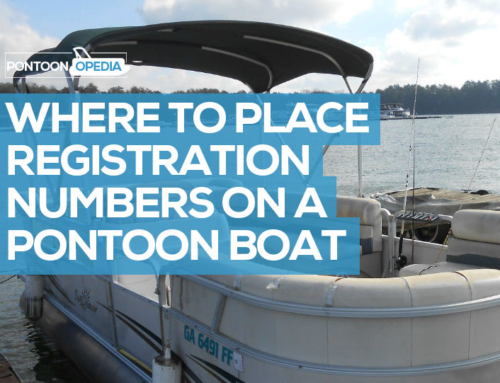If you need to replace a pontoon boat battery, either as an upgrade, or to replace a dead one, what should you look for and what’s the best option?
It’s actually not that simple, because there are three different types of pontoon boat batteries on the market, as well as the applications they are used for. You need to choose the best pontoon battery depending on what you’re going to be using it for and how.
So firstly, there are 3 basic types of batteries you need to be concerned with on a pontoon boat. You can see those listed below:
- The starting or cranking battery – designed to help start the main engine
- The deep cycle battery – used to power accessories on your pontoon boat
- The dual purpose battery – works for both the functions above
Did You Know? Whilst there are two main batteries on a pontoon boat, you can also buy dual-purpose batteries.
Best Starting Battery for a Pontoon Boat
I love Optima Marine pontoon batteries as they come with 100 hours of reserve battery power, and have great starting power. In my experience, and those of people who have reviewed them, they do tend to last twice as long as rival pontoon boat batteries.
Take a look at the Optima Marine BlueTop starting battery, it’s perfect for pontoons with trolling motors and extensive electronic systems including radios and fish finders.
It comes with a fast re-charge time too and is purely a dedicated starting battery – please don’t buy this for for cycling duty use, instead opt for one of the further recommendations lower down.
Best Deep Cycle Battery for a Pontoon Boat
If you need a cycling battery for your pontoon boat, then I would recommend an Interstate Batteries product. They are just really, really good. The one I like is the AGM Deep Cycle battery – go take a look on Amazon.
It will help to power your fish finder, depth finder, radio, trolling motor, and any other electrical accessories you can care to think of on your pontoon.
It is a smaller size than your normal large deep cycle battery, but the benefit is that it’s much lighter and easier to carry. With the recommended battery above you can fit it into smaller on-board compartments, and charge it easily too.
Handy Hint: Always check to ensure that the pontoon boat battery you buy online looks like the one you are replacing so you don’t waste time and money.
Best Dual-Purpose Battery for a Pontoon Boat
If your pontoon boat has a dual-purpose battery that acts a starter and for the deep cycle purpose, then I would again opt for an Optima Marine product. It will let you not just start the motor and engine but will also power-up all those on-board electronics you are carrying.
I use the Optima Marine D34M starting and deep cycle battery. Check your pontoon boat to make sure this is going to fit into your battery box before you buy it. If it doesn’t, then browse through the alternative Optima Marine batteries, as they have a wide selection, all of which are very good, being renowned for long life and robustness.
This particular battery has outstanding online reviews for what it offers in terms of optimal starting power in bad weather, is mountable in pretty much any configuration or position, and has a reserve capacity of 120 minutes giving you great peace of mind when out on the water.
Best Environmentally-Friendly Option
And finally, how about the best pontoon boat battery for the environmentally minded and green amongst you? For me, it’s an important consideration and I would recommend the Vmaxtanks MR137 on Amazon.
In recent years there has been a lot of press coverage about how batteries can take thousands of years to decompose. With that in mind, please always dispose responsibly. Now whilst this recommended pontoon battery still takes years to decompose (they all do), it doesn’t contain silica gels in it, meaning it won’t contaminate the water if there’s a leak.
It also has a maintenance free operation so you won’t need to check the specific gravity of the electrolyte or add water whilst in use on your boat.
Table of Contents
How to Fit a New Replacement Battery
Now you have a new battery (or batteries) in your pontoon boat it’s time to replace the old ones. There are a few additional items that I recommend you use when replacing batteries, which will make the task a whole lot easier. These are:
- Bowl of water and baking soda
- Wire brush (see on Amazon)
- Grease for battery terminals (see on Amazon)
We’re going to be using the wire brush to clean up the old wire connectors. But before you do that, make sure you have your baking soda and water mix on hand.
This water mix will help to neutralize acid should you spill it. Please do this, as it will protect you, anybody else, and the environment around you. If you do spill any of the battery acid, pour the neutralizing mixture over it immediately. It works very well.
Removing the Old Battery
Once you’re ready, you will need to disconnect the earth connector first. This will be on the black earth terminal. If you do this, it will stop a short circuit from happening and also prevent any sparks that could ignite any oil fumes.
After you have disconnected the black, you should then unclip the red connector. You can now pull the old battery out of the box and prepare to fit the replacement.
Fitting the New Battery
This is where the wire brush is going to come in handy, as you should brush up and clean the wire connectors as they are bound to have debris and corrosion on them. By brushing them up to looking new, we can help ensure cleaner connections with your new replacement battery.
Once they are clean, you should grease the battery terminals. We do this to stop the connection and clamp from corroding together, making it easier to remove the pontoon battery in the future. As long as you use a fine layer of grease, it won’t affect the connection.
After you have applied the fine layer of grease, you can connect the positive connector back. Once that’s done connect the earth connector back to the black. Your pontoon boat battery is now ready.
To see an actual installation in real-life, take a look at this really useful video below.
Pontoon Boat Battery Charger
As well as a new or replacement battery, you’re also going to need something to charge it with in the event of it going dead. Believe me, this happens more often than you would think.
Handy Hint: Always use a charger that is specifically designed for the battery that you are using – check the specification before you buy.
It’s important to keep your new battery healthy at all times. If you let it run down frequently, then it could compromise the battery life. Over-charging the battery will also damage it.
That’s why it’s critical that you choose the right type of pontoon boat battery charger – and one that is approved and certified by the American Boat and Yacht Council. There are many different types on the market so choose wisely!
For example, if you buy a 12-volt Vmaxtanks battery, you would want to select this charger here. Alternatively, for the popular Optima Marine pontoon batteries, I use their own branded Digital 400 charger.
Final Thoughts on What You Need to Replace
I just wanted to reiterate some points when it comes to choosing the best replacement battery for your pontoon boat. It’s important that you know the differences between a deep cycle battery and a cranking or starting battery. I already touched on it at the top of the buyer’s guide, but here’s a little more detail.
Deep cycle batteries are for your trolling motor, and other electrical appliances or applications that need a constant recharging and discharging. It provides a constant current draw to anything that’s in demand for hours. In real simple terms, it’s for all the toys and accessories you have on your pontoon boat.
Starting or cranking batteries are manufactured to supply a large amount of juice for just a few minutes. For example, when turning your pontoon motor starter. Starting batteries, unlike deep cycle ones, don’t have to be discharged at a steady rate for hours.
And dual-purpose batteries do exactly what the name implies. They serve both purposes. If you pontoon only has one battery on-board, then chances are it’s a dual use one.









